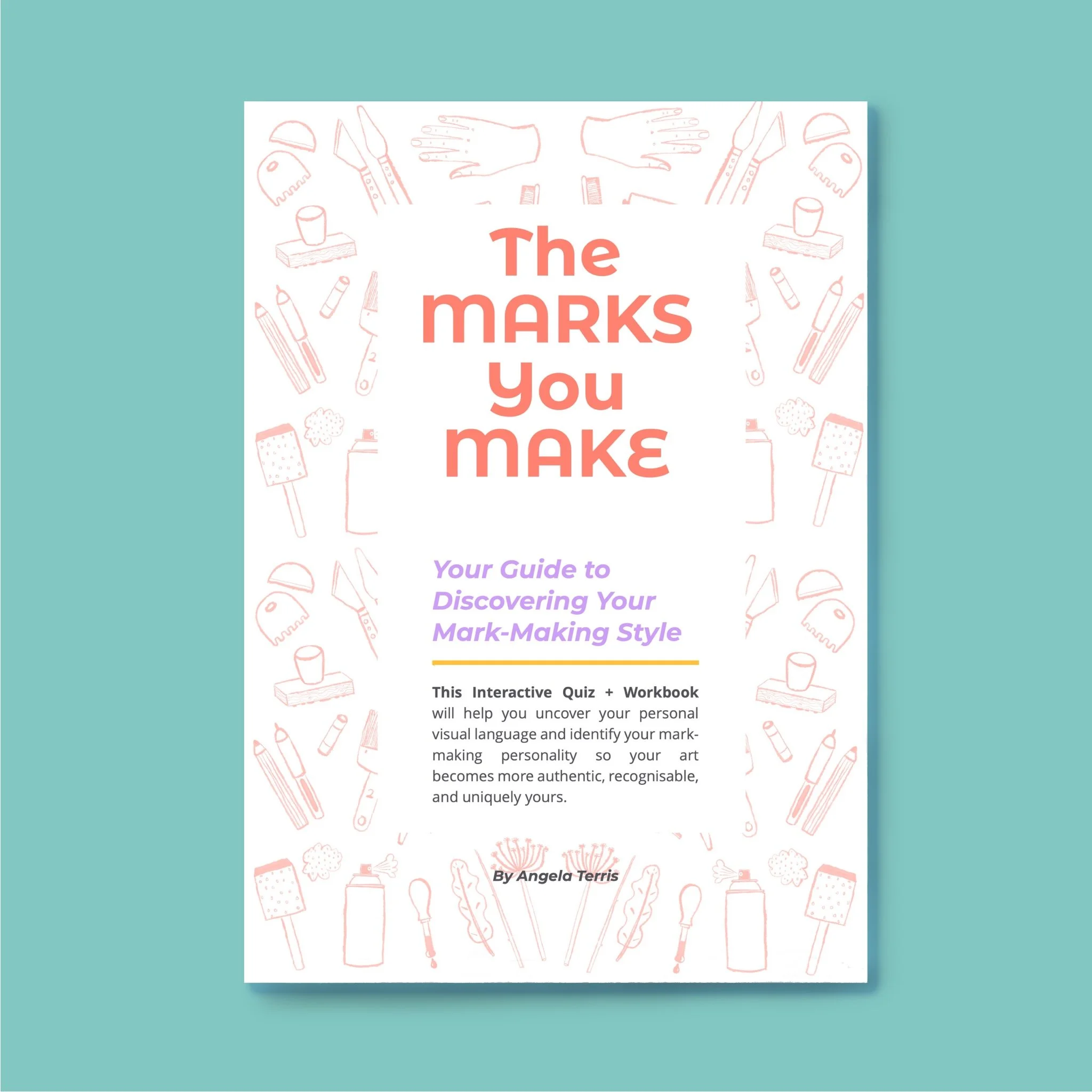What is Mark-Making, and How is it Important to Your Artwork?
(Read time 3 mins)
Mark-making is the action of producing marks on a surface such as paper, canvas, textiles, walls, floors, or objects.
To create marks, a mark-making tool is used. For a painter, the most familiar forms are pencil, pen, brush, palette knife and charcoal. More experimental tools, such as found objects, produce great results too, for instance, twigs and feathers.
Hand-made brushes from natural obejects made by Angela Terris
When your mark-making tool touches the surface and leaves a trace, a mark is made. Marks you can make are dots, lines, shapes, textures and patterns.
The type of marks you choose to use make up the building blocks of your artwork. Part of the journey of becoming an artist is finding the tools, materials, preferred surface, marks and subject matter that represent you and what you wish to express.
A variety of marks adds interest to your work and helps the viewer's eye move around the surface. This encourages the viewer to engage in your work and become emotionally connected.
Artists who are known for the way they produce their marks create a signature style. A signature style is important as it helps an artist work stand out and become recognisable.
Over time, an artist’s work becomes more refined as their confidence in their skill, the materials they use, the way they use them, and how they express themselves grows.
Painting created using hand-made brushes by Angela Terris
How to make marks?
You don't need loads of tools to make marks; a brush held at different angles can be effective. A variety of marks can be created by using the tip, end, flat or side of the brush. Sometimes limiting your tools can force you to get more creative.
Here are different types of marks you can make and experiment with:
loose or controlled
light or heavy
textured or smooth
thick or thin
jagged or flowing
quick or slow
smudged or clean
wet or dry
dense or spacious
even or random
When creating your artwork, think about how you want to combine your marks, whether similar, contrasting or a mixture, as this will influence the overall feel of the artwork. For example, are you aiming for a calming, lively, dramatic or fluid style?
Calming marks could be flowing, slow, spacious, smudged and light. Dramatic could be heavy, textured, quick, jagged and dense.
‘Fields’ by Angela Terris
For example, you can see in the above painting how I have mixed dense at the bottom and airy and lively at the top. This helps create differences, and the artwork is more interesting because of it.
Make your mark.
What marks are you drawn to when you are creating or looking at art? Spending a bit of time to reflect on this is helpful.
I created a Pinterest board to collect artworks I liked, and by doing this, I began to see my preferences. I noticed that I liked free-flowing, fine, light, spacious, and random elements, and this fed back into my artwork.
If you are going to do a Pinterest board or even an analogue inspiration board, I recommend just giving yourself about 30 minutes; otherwise, you could end up with information overload. Then experiment to see which marks you like, feel comfortable with, and want to explore more of.
Happy mark-making!
All the best, Angela - artist, writer and creative encourager



